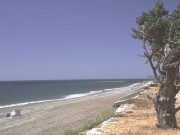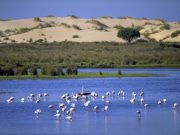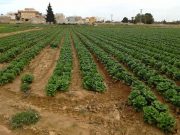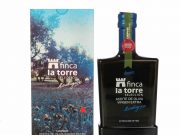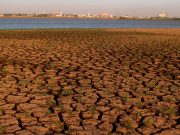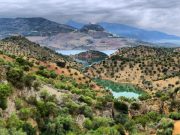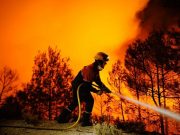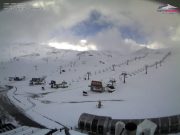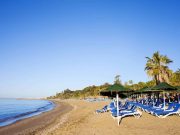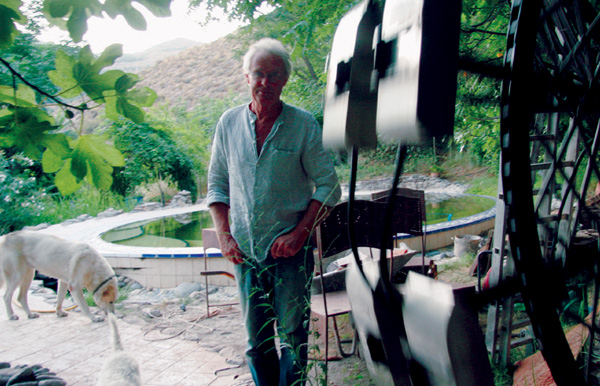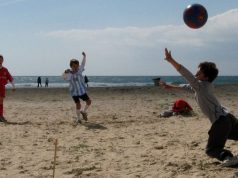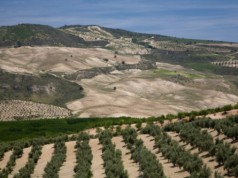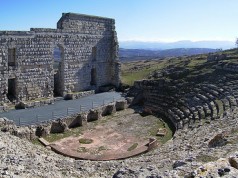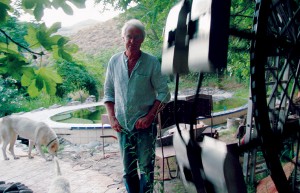
By Chris Stewart
THIS winter has been a winter like no other. The gaggles of old men, the reception committees at the entrance to every village, are still shaking their heads in disbelief.
For not even in 1976, when the rivers rose and washed much of the village of La Rabita and 200 of its inhabitants into the sea, did the rains rain down on Andalucia as they have these last few months.
Everyone has some astronomical figure to bandy about… but few can compare with the thirteen hundred (yes 1,300) litres that fell in the High Alpujarras, in just one week this January.
The Alpujarras where I live, is one of the very driest spots in Spain. It may seem, even in the drought of summer, to be well watered and rushing with streams and springs, but this is a consequence of the high snowfields, and the miraculous aquifers deep in the bowels of the Sierra Nevada, rather than rainfall.
In fact, the rainfall in an average year is scarcely greater than that of the Sahara desert.
In spite of what those old folks say about how much greater the rainfall was in the past, it was not.
It has always been dry in the Alpujarras.
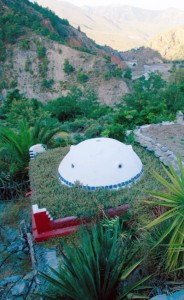
Look at the houses: they have, in common with the architecture of North Africa, flat roofs. The flat roof is a lot less technically demanding than a pitched roof, also cheaper… but it’s not a thing you’d want in a rainy climate.
They are not designed for rain and all the roofs leaked. My neighbour Bernardo spent much of the winter sleeping on his back with a bucket clutched to his chest. Every hour or so it would fill up and he would have to get up to empty it.
As it happens, we remained perfectly dry on our farm, a few miles outside Orgiva, as we now have a ‘green roof’.
The main reason for the green roof is to insulate the house against the summer heat, which it does very effectively by providing a dense cover of succulent plants to keep the sun off. It looks good, too, especially when the portalakia and mesembrianthemum are in blossom and hanging in thick colourful tendrils down the outside walls. In winter the extra depth of insulation keeps the warmth in, too.
But the best of it is that the waterproof layer of PVC that you must have to keep the roots from penetrating the concrete of the roof, also keeps the drips out.
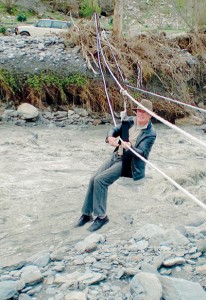
Our bridge however collapsed in that first terrible onslaught of rain at Christmas, as well as the road, the acequia, our water supply, a whole rake of oranges and olives, and some of the fields down by the river.
But it would be wrong to complain; many people were hit a whole lot harder. We have recovered more or less by now.
A week after the loss of the bridge we set up the ‘Flying Fox’, which consists of a steel cable stretched above the river, and a cunning system of ropes and pulleys to pull anyone and anything across.
To date we have winched in and out six bombonas of butano, two sacks (rather poignant this) of chicken feed, 30 sacks of sheep feed, a sofa, and 89 sheep, who, through no fault of their own, got stranded on the wrong side of the river.
But to return to my theme: it’s not just the architecture of the region that suffers in the rain; it’s the geological weft and warp of the hills and valleys, the very fabric of the mountains.
Apparently the Sierra Nevada is very young geologically speaking. This means that when it gets wet it all starts falling to bits: rocks break off and roll down the steep hills; land slips away; the very
earth turns to porridge and pours in thick, sludgy flows down into the rivers.
You can literally watch the process of erosion that in a hundred million years will turn the Sierra Nevada into something resembling the Pyrenees, where all the extraneous muck has been washed from the tops, leaving beautiful bare pinnacles of rock.
This winter, every morning the villagers woke to find yet another stone wall collapsed, yet more terraces fallen away, and the paths and bridges that lead to their lands, impassable.
I hate to see the damage to the man-made landscape, the walls and terraces and ancient roads that are the result of centuries of human ingenuity and backbreaking labour.
And to walk along the ancient ways, the Caminos Reales, among the villages in the valleys, with the majestic backdrop of the high peaks.
Unfortunately, even without the winter rains, this infrastructure has fallen on hard times. And unless real efforts are made to restore the ancient ways and revive the small scale agriculture that has always
nourished these villages, then much of the area’s unique beauty will disappear, and people will no longer come to walk in it.
With this in mind, we have set up an association called Campos y Caminos de la Alpujarra. Still in its infancy but we are aiming to motivate that dying breed of older Alpujarreños who have the ancient
skills to teach, and those younger folks who may be out of a job, to get out there and hump stones about.
The idea is that if we can reopen the ancient ways, rebuild the walled terraces, and repair the bridges, then we can give a shot in the arm to the economy.
For the mines have been closed, and there’s not a lot of money in mountain agriculture; but what remains is the dazzling beauty of the landscape, the history and the unique cultural heritage.
Try as they might, the rains will never wash those away.
Chris Stewart’s new book Three Ways to Capsize a Boat is out now. You can find out more about his movements at: www.drivingoverlemons.com






